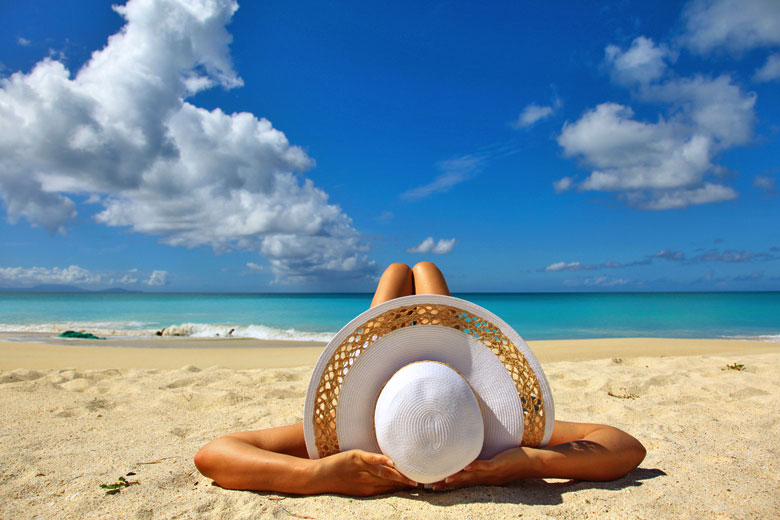- Explore lowest airfares by destinations worldwide
- Find the cheapest month or filter by route or month
- Prices shown found on Skyscanner in last 8 days
Cook Islands weather by month
Check out the Cook Islands weather averages by month. Compare detailed monthly climate statistics including temperature, rainfall and sunshine figures.
| Jan | Feb | Mar | Apr | May | Jun | Jul | Aug | Sep | Oct | Nov | Dec | |
|---|---|---|---|---|---|---|---|---|---|---|---|---|
| Maximum daytime temperature °C |  28 28 |
 29 29 |
 29 29 |
 28 28 |
 27 27 |
 26 26 |
 25 25 |
 25 25 |
 26 26 |
 26 26 |
 27 27 |
 28 28 |
| Days with some rainfall |  17 17 |
 17 17 |
 17 17 |
 13 13 |
 9 9 |
 6 6 |
 5 5 |
 3 3 |
 5 5 |
 5 5 |
 6 6 |
 11 11 |
| Sea temperature °C |  27 27 |
 27 27 |
 28 28 |
 27 27 |
 26 26 |
 25 25 |
 25 25 |
 24 24 |
 24 24 |
 25 25 |
 25 25 |
 26 26 |
More about the Cook Islands
Cook Islands by month
Jan Feb Mar Apr May Jun Jul Aug Sep Oct Nov Dec
Recommended for the Cook Islands
The climate guide for Cook Islands (Avarua) shows long term monthly weather averages processed from data supplied by CRU (University of East Anglia), the Met Office & the Netherlands Meteorological Institute. Find out more about our data sources.
Top Cook Islands destinations
Below are average maximum temperatures at popular countries, regions and places in the Cook Islands for next month - August. Select a destination to see the climate guide for all months of the year.
All Cook Islands destinations
Metric (°C / mm) | Imperial (°F / inches)
Cook Islands climate overview
The Cook Islands are part of Polynesia, lying almost exactly in the centre of the South Pacific between Tonga and French Polynesia. The indigenous people are Maoris known for their vibrant culture and energetic dances. The 15 islands form a northern and southern group separated by over 800 kilometres (500 miles) of ocean.
The northern group of islands are coral atolls, which are mostly flat and low lying. Because of human occupation none of the original native vegetation of the islands remains. Today coconut palms and pandanus trees grow along the picture-perfect sandy beaches, graced by scenic lagoons.
The southern island group is volcanic in origin. The largest island is Rarotonga, whose rugged mountainous interior is covered in lush jungle, cleared in parts for citrus groves to thrive on the fertile soils. Near the south coast is the stunning Wigmore's Waterfall, while the capital Avarua lies on the north shore.
Coastal resorts have been developed to take advantage of the picturesque sandy beaches, however the most beautiful beaches and lagoons are found on Aitutaki 250 kms (160 miles) to the north.
Coral reefs surround almost all of the islands, creating a sheltered haven of turquoise water, teeming with tropical marine life and bathed in warm water all year.
The climate is warm tropical and wet. Rainfall is likely in all months, becoming heaviest from January to March and more isolated in the sunnier drier season. Daytime temperatures are warm throughout the year, falling to comfortable at night in the drier months.
Tropical Cyclones are possible between December and March but are rare.
Compare Cook Islands with the UK
Below the Cook Islands chart shows average maximum daytime temperature for Cook Islands (Avarua) and the UK (London).
Maximum daytime temperature (°C)
Metric (°C / mm) | Imperial (°F / inches)
Compare more Cook Islands weather >>
Be inspired
Get your weekly fix of holiday inspiration from some of the world's best travel writers plus save on your next trip with the latest exclusive offers
We promise not to share your details
Related posts
Popular travel offers
Explore holidays in the sun for less
- Beach holidays
- Family holidays
- City breaks
- Summer holidays
- Winter sun holidays
- Holiday offers
- Top travel brands
- Airlines & flights
- Discount hotels
- Airport parking deals
- TUI
- Jet2holidays
- easyJet holidays
- Love Holidays
- January sales
Airport parking
- Manchester Airport
- Stansted Airport
- Bristol Airport
- Luton Airport
- Birmingham Airport
- Edinburgh Airport
- Gatwick Airport
- Glasgow Airport
- Newcastle Airport
Airport lounges
- Manchester Airport
- Birmingham Airport
- Bristol Airport
- Edinburgh Airport
- Glasgow Airport
- Heathrow Airport
- Newcastle Airport
- Stansted Airport
- Gatwick Airport


















